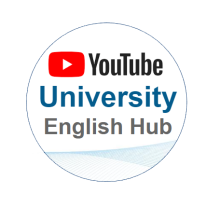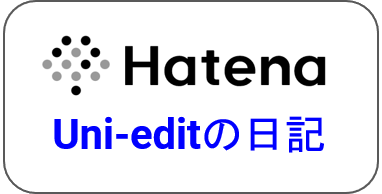難易度:中級
画期的な研究は、文献にある欠陥を特定し、知見の矛盾をなくす新たな仮説を立てることによって、新しい方向性を見出します。
文献を知ることなくこの目標を達成することはできません。先行者や同輩の研究者の知見を確認したり反論したりするためには、それらの知見を正確に報告しなければなりません。さらには、自分の研究における仮説の中心であるエビデンスと、自分自身による分析の解釈に読者を注目させたいと望むはずです。
このヒントでは、多くの例文を示して、知見を報告するいくつかの一般的な方法を検討します。おそらくあなたはこれらの例文の文章構造を何百回も見たことがあり、すでに自分の論文にも使用しているでしょう。しかし、このヒントを読んだ後にこれらの一般的なフレーズや文章構造を使用すると、読者がどう考えるかをより深く意識できるようになるでしょう。
方法1 – 報告動詞を使用する
すべての学術論文の執筆者は先の研究の結果やエビデンスを示す際に、"report"、"demonstrate"、"show"などの報告動詞を用います。報告動詞はすべての論文で一般的に使用されます。
Neurogenesis has been shown to be essential to the hippocampus’s ability to tolerate stress (Lehmann, 2013).
(訳)神経新生は海馬のストレス耐性に不可欠であることが示されている(Lehmann、2013)。
Transcription factor Spi-B has been demonstrated to be specifically expressed by M cells in gut epithelium (4).
(訳)転写因子Spi-Bは、腸管上皮のM細胞によって特異的に発現することが示されている(4)。
It has been reported that texture weakening can be achieved by alloying Mg with yttrium and rare earth elements such as cerium or neodymium [1-3].
(訳)組織の弱化は、Mgがイットリウムや、セリウムまたはネオジムなどの希土類元素と合金化することによって達成しうることが報告されている[1-3]。
上記の文章はすべて受動態を使用していることに注意してください。つまり、それらの英文では誰かが何かを「示した」とは述べていません。Uni-editでは、英語が母語ではない学術英語論文の著者は受動態を好むようであることに気づいています。受動態の支持者は、その利点の1つとして、しばしば客観性を主張します。すなわち、受動態は動作主を特定しないため、誰がそれを行うかにかかわらず、その知見や方法などは正しいはずだからです。
しかし、実際には能動態を使って、同じ単語数以下で、エビデンスのレベルについてより多くの情報を読者に提供することができます。例えば、下記のように、能動態で使用される、"many studies"や"several authors"などを主語とする表現は、この文に高いレベルの確実性があることを読者に伝えます。
Many studies have reported that texture weakening can be achieved by alloying Mg with yttrium (Y) and rare earth (RE) elements such as cerium (Ce) or neodymium (Nd) [1-3].(訳)多くの研究が、Mgをイットリウム(Y)や、例えばセリウム(Ce)またはネオジム(Nd)のような希土類(RE)元素と合金化させることによって組織の弱化を達成できることを報告している[1-3]。
一方、研究論文の著者の名前を特定することは、新規で、ユニークな、論争の的となる、または未確認である知見を紹介する効果的な方策です。そうすることで、ある研究または研究群には特定の知見があり、その実験方法、条件、限界などについての詳細は、その参考文献を調べるべきであることを読者に伝えます。
能動態を使用しても受動態と同レベルの確実性を意味しますが、より少ない語数で直ちに、直観的にエビデンスを示します。
Terahara et al. found that transcription factor Spi-B is specifically expressed by M cells (2008).
Transcription factor Spi-B has been found to be specifically expressed by M cells (Terahara et al., 2008).
方法2 –事実として知見を述べる(ただし、引用文献を示す)
これらの文章をもう一度見てみましょう。エビデンスのレベルを示す部分が他にあるでしょうか。答えはYesです。引用文献の参照符です。
引用文献の参照符を付けることで、自然な英語で、確実に知見を報告することができます。単に事実として報告します。
Transcription factor Spi-B is specifically expressed by M cells (4).
(訳)転写因子Spi-Bは、M細胞によって特異的に発現される(4)。
Process innovation is critical in influencing service industry dynamics (Klepper, 1996).
(訳)サービス産業のダイナミクスに影響を及ぼすにはプロセスの革新が不可欠である(Klepper、1996)。
Texture weakening can be achieved by alloying Mg with yttrium and rare earth elements such as cerium or neodymium [1-3].
(訳)組織の弱化は、Mgをイットリウムと希土類元素、例えばセリウムまたはネオジムと合金化することによって達成できる[1-3]。
このような文を読んだら、「これはいくつかの研究によって裏付けられた知見であり、当然真実であろう」と読者は考えるでしょう。その領域で一般的な認識であるか、または多くの関連論文によって得られた仮説について、引用文献を利用するのは良いことです。“show”のような報告動詞は必要なく、引用文献の存在は参照符をつけていることで明白です。
場合によっては、ある知見を支持する論文のすべてを採り上げることは不可能です。その場合は、“many studies”や“e.g.”、または“see”などを使用できます。
Many studies have shown that process innovation is critical in influencing service industry dynamics (e.g., Klepper 1996).
(訳)多くの研究は、プロセスの革新がサービス産業のダイナミクスに重大な影響を及ぼすことを示している(例えば、Klepper 1996)。
信頼性を示して何をすべきか?
緒言の章では、幅広い事柄から狭い事柄に進めるべきであることは、おそらく直観的にわかるでしょう。自分の専門領域とその亜領域について幅広く、信頼性の高い記述から始め、徐々にその研究に関連する特定の知見や研究を紹介する必要があります。
幅広い事柄を記載するには、これまでの知見を事実として提示するのが妥当です(方法2)が、特定の知見については、該当する研究論文の著者の名前を個別に挙げるか、それらの研究論文を列挙するのがよいでしょう(方法1)。研究の数を示すこと("one study", "many studies ", "only a few studies "など)は、関連論文の著者らの名前を挙げるほど厳密な方法ではありませんが、より重要なニュアンスで知見の重要性のレベルを示すことができます。
論争のある知見や矛盾した知見をどう扱うか?
優れた研究論文では、十分に支持されているかまたは確立されている知見ばかりでなく、論争の的となっているかまたは否定的されている知見も示すべきであることに留意してください。完全に真実ではないかもしれない知見やエビデンスを報告する場合、次のようないくつかの理由が考えられます。
- 研究の目的が、エビデンスの少ない知見を実証することである。
- 得た知見が、その他の研究の知見と一致しない。
- ある知見について論争があるか、矛盾する知見が見つかっているか、最終的な合意に至っていないことを論文の読者に伝える。
- 自分の専門領域で注目を集める論文に同意する場合(または同意しない場合は特に)、それを認める。
要約
学術的な文章によくある表現の一部がわずかに違っても、読者は異なる推測をすることがあります。“show”、“demonstrate”、“report”などの報告動詞の使用法を習得し、引用や能動態を効果的に使用すれば、あなたの研究の未確認の背景と、新規で独特で画期的な要素とを、読者は確実に区別することができるでしょう。
Download Tip Here:  Prove It! (2017): Confidence, Evidence, and Citations
Prove It! (2017): Confidence, Evidence, and Citations
Uni-edit English Writing Tip 014 - Prove It! (2017): Confidence, Evidence, and Citations
Difficulty: Intermediate
Groundbreaking research pioneers new directions by identifying gaps in the literature, and by forming new hypotheses to reconcile contradictory findings.
You can’t achieve this goal without knowing the literature. You have to report the findings of your predecessors and peers accurately in order to confirm or refute them. Moreover, you want your readers to focus on evidence that is central to your study hypothesis, and your own interpretation of your own analysis.
In this tip, we’ll review some common ways to report findings with many example sentences. You’ve probably seen these structures hundreds of times, and used them in your own papers. However, after reading this tip, hopefully you’ll have a better awareness of what your readers think when you use these common phrases and structures.
Method #1 - Use a Reporting Verb
Every academic writer uses reporting verbs like “report”, “demonstrate”, and “show”, which indicate findings or evidence from previous research. Reporting verbs are common and expected in every paper.
Neurogenesis has been shown to be essential to the hippocampus’s ability to tolerate stress (Lehmann, 2013).
Transcription factor Spi-B has been demonstrated to be specifically expressed by M cells in gut epithelium (4).
It has been reported that texture weakening can be achieved by alloying Mg with yttrium and rare earth elements such as cerium or neodymium [1-3].
Note that the sentences above all use the passive voice: i.e., the English does not tell you who ‘showed’ what. At Uni-edit, we have noticed that non-native speakers of academic English seem to prefer passive voice. Advocates of passive voice often claim objectivity as one of its advantages: i.e., because passive voice doesn’t specify the agent, the finding, method, etc. should be true regardless of who does it.
However, you can actually use the active voice to provide more information to readers about the level of evidence, in as many words or fewer. For example, as below, expressions like “many studies” and “several authors” used in the active voice tell the reader that the statement has a high level of confidence.
Many studies have reported that texture weakening can be achieved by alloying Mg with yttrium (Y) and rare earth (RE) elements such as cerium (Ce) or neodymium (Nd) [1-3].
On the other hand, specifying the author of a study by name is an effective strategy for novel, unique, controversial, or uncorroborated findings. This tells your reader a finding is specific to a certain study or studies, and they should consult that reference to learn more about the experimental method, conditions, limitations, etc.
Using the active voice implies the same level of confidence as the passive voice, but immediately and intuitively shows the evidence, in fewer words.
Terahara et al. found that transcription factor Spi-B is specifically expressed by M cells (2008).
Transcription factor Spi-B has been found to be specifically expressed by M cells (Terahara et al., 2008).
Method #2 - State Findings as Facts (but Add a Citation)
Let’s take another look at these sentences: isn’t there other text that conveys the level of evidence? The answer is yes: the citations.
Citations let you report a finding in confident, natural English: just report it as a fact.
Transcription factor Spi-B is specifically expressed by M cells (4).
Process innovation is critical in influencing service industry dynamics (Klepper, 1996).
Texture weakening can be achieved by alloying Mg with yttrium and rare earth elements such as cerium or neodymium [1-3].
Upon reading a sentence like one of these, your readers will think: “This is a finding that has been corroborated by several studies: I can assume it is true.” This is good practice for common knowledge in the field, or assumptions made by many related papers. Reporting verbs like “show” aren’t necessary: the presence of a citation makes it obvious you are referencing the literature.
In some cases, it’s impossible to name all the papers that support a finding: in these cases, you can use “many studies” and “e.g.” or “see”.
Many studies have shown that process innovation is critical in influencing service industry dynamics (e.g., Klepper 1996).
What Does This Have to Do with Confidence?
You probably know intuitively that the Introduction section should progress from broad to narrow: it should start with broad, high-confidence statements about your field and subfield, and gradually introduce specific findings and studies relevant to your research.
For broad statements, it makes sense to present the findings as facts (Method #2); for specific findings, on the other hand, it makes sense to name or enumerate the studies individually (Method #1). Enumerating the number of studies (“one study”, “several studies”, “only a few studies”, etc.) is less precise than naming the authors of the relevant studies, but can imply the level of importance of a finding with greater nuance.
What about Controversial or Contradictory Findings?
Note that good research should not only present well-supported or established findings, but also controversial or contradictory findings. There are several possible reasons to report findings or evidence that might not be completely true:
- The purpose of your study is to corroborate the low-evidence finding.
- Your findings disagree with the other study’s findings.
- To tell your reader there is controversy, or that conflicting findings have been found, or that a final agreement has not been reached.
- To acknowledge a high-profile paper in your field, if you agree with it (or especially if you don’t!).
Summary
As we can see, readers can draw different inferences from language that is only slightly different, even for some of the most common phrases in academic writing! Mastery of reporting verbs like “show”, “demonstrate”, and “report”, combined with efficient use of citations and the active voice, will ensure your readers can separate the uncontroversial background of your study from its new, unusual, and groundbreaking elements.
END OF TIP



